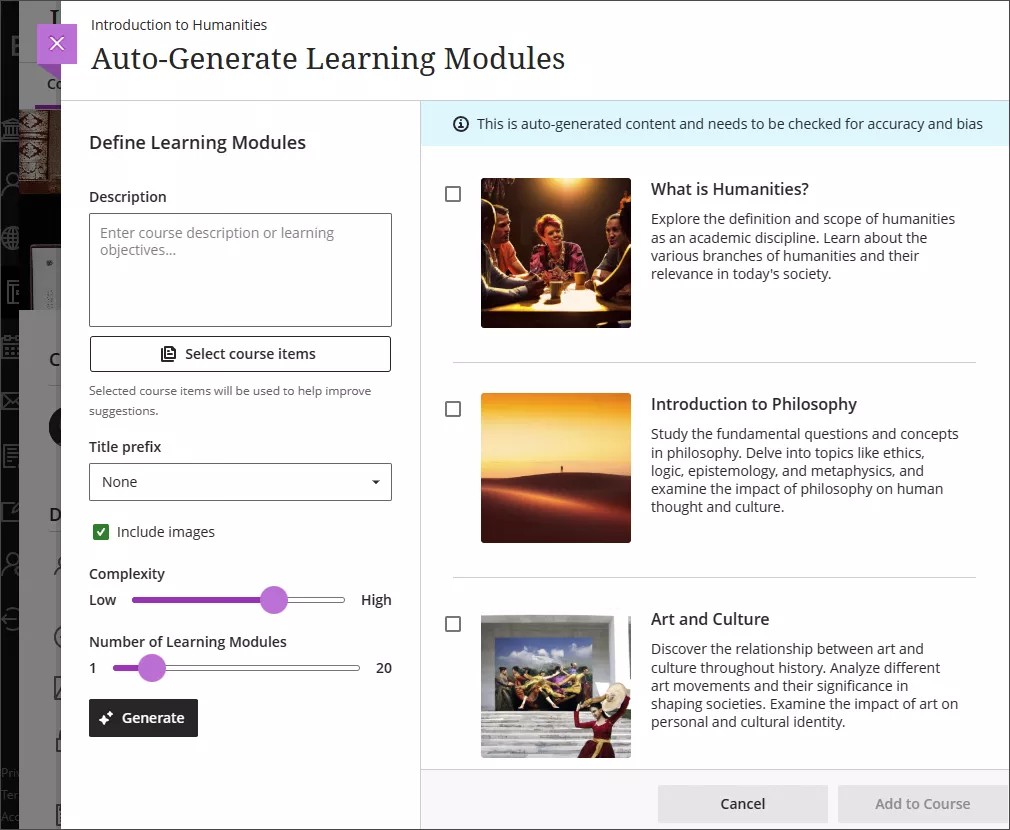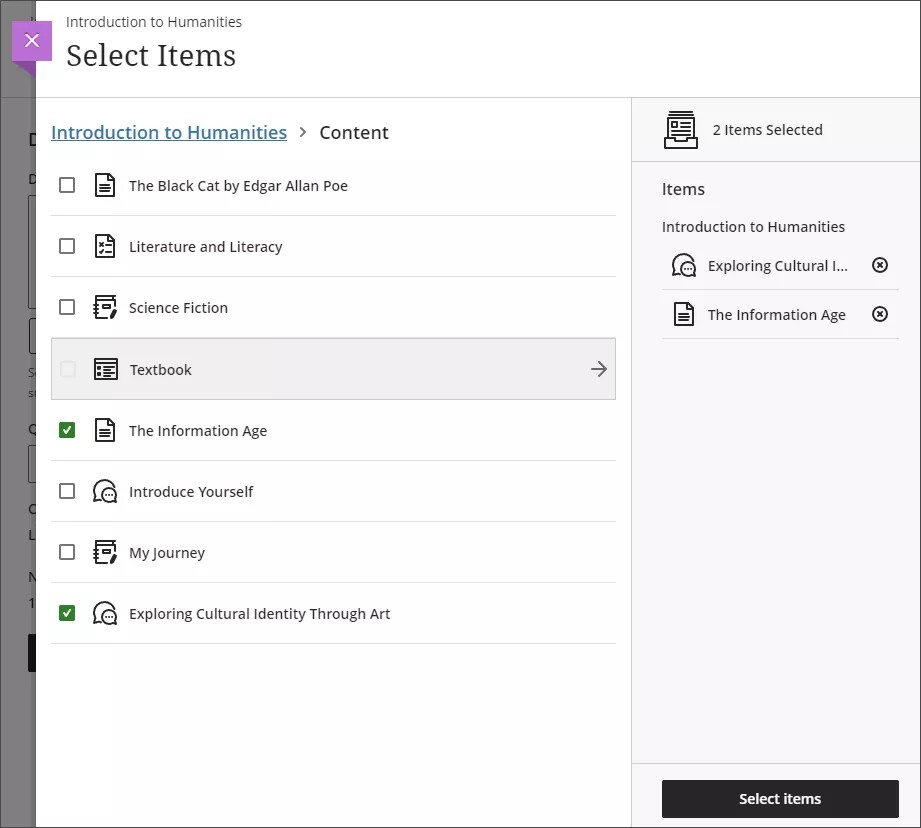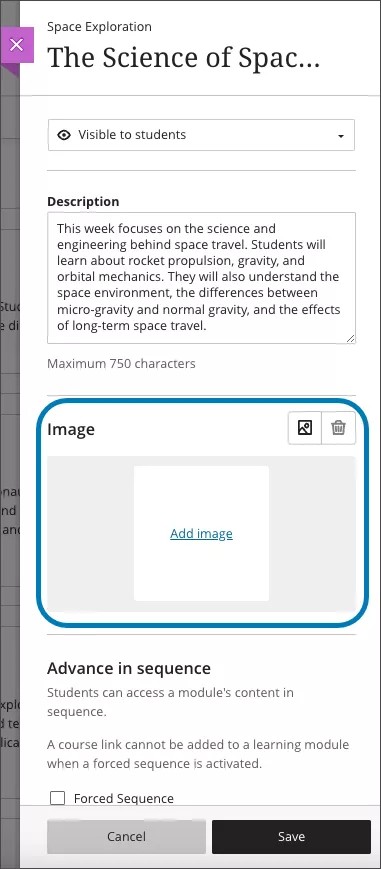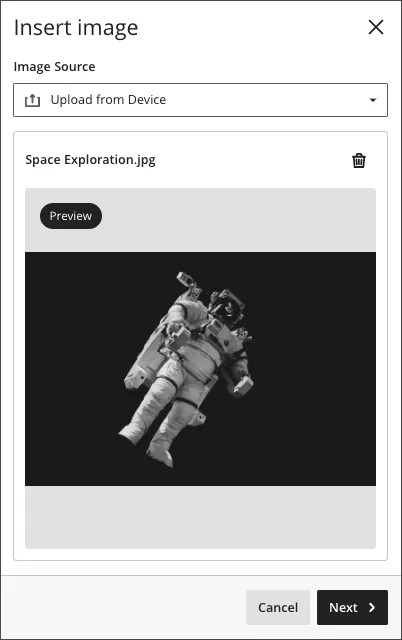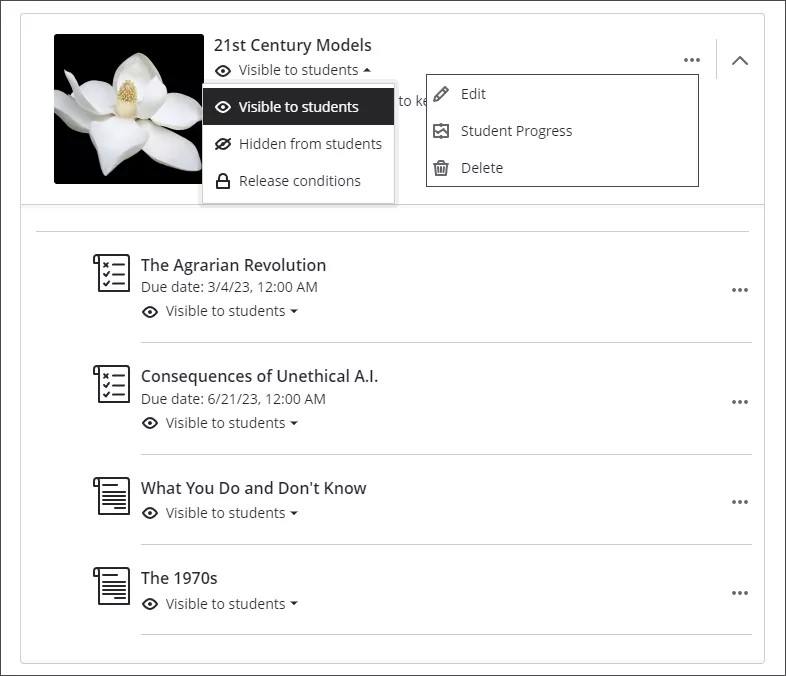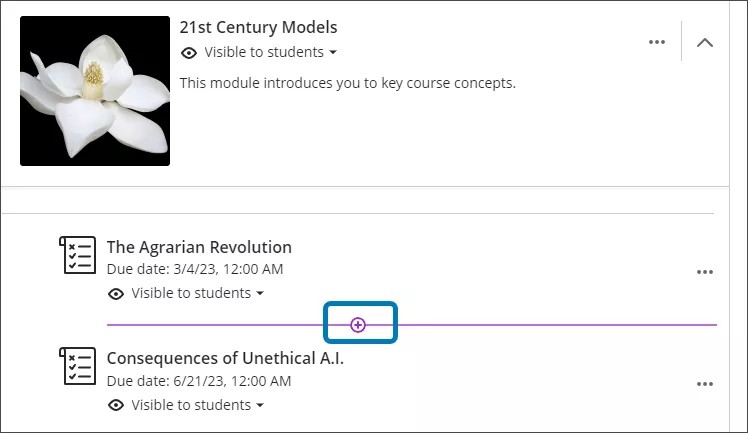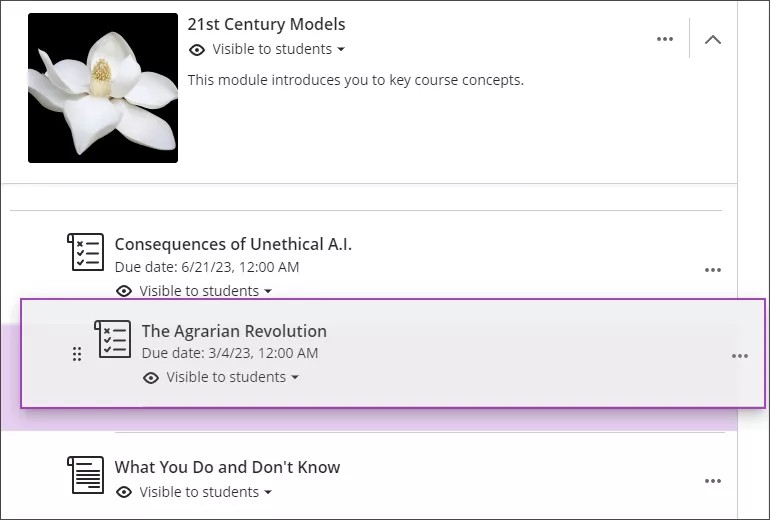About learning modules
You can use learning modules in your course as containers for organized collections of content. Modules let students navigate from one content item to the next without distractions or extra clicks. A learning module helps immerse students in the lesson or concept you're teaching. If you use a textbook or other materials as the basis for your course curriculum, modules are an effective and logical way to group content to match the pace of these materials.
Use a learning module to support a course objective, concept, or theme. For example, use a learning module to present the concept of magnets' fields before you describe how speakers and microphones work. Understanding the first concept is dependent on understanding the second concept.
You can also force a content sequence to make sure students know which content to access and in what order.
Alternatively, you can allow students to explore the content in a learning module in any order and at their own pace. For example, use a learning module to present a series of images and descriptions of various animals in a genus. Students can view the images and descriptions in any order as no order is required for understanding the whole.
Topics on this page include:
Create a learning module and add content
Add learning modules directly on the Course Content page. Drag existing content into modules or use the plus icon to add new content directly.
You can add these items to a learning module:
- Documents
- Files
- Tests and assignments
- Folders
- Multimedia
- Links to websites, discussions, and journals
Select the plus sign wherever you want to add a learning module. In the menu, select Create to open the Create Item panel. Select Learning module.
Learning modules appear in new courses. If you don't see an option to add a learning module, your course was created before this feature became available.
Type a name, optional description, and select the module's visibility.
To select whether students will view the learning module's content in sequence, select Conditional availability in the module's visibility menu.
More on releasing module content in sequence
In addition to content items, files, and assessments, you can add activities and tools that promote interactive learning and collaboration.
For example, you can add assignments or group projects to give students an opportunity to apply what they've studied in a learning module. You can also add collaboration tools such as discussions where students can brainstorm and share their ideas about the topics presented.
Auto-generate learning modules
If you need help designing your course and don’t know where to start, the AI Design Assistant can guide you through building the course’s structure. The AI Design Assistant draws insights from your course's title and description to generate learning modules.
More about the AI Design Assistant
In an empty course, select Auto-Generate Modules.
If you already have content in your course, Auto-Generate Modules is an option in the Create Item menu.
The Auto-Generate Modules panel appears. Each generated module comes with a name and description.
You have several ways to customize the learning modules that the AI Design Assistant generates.
- Enter a description (limited to 2000 characters) to narrow the focus of the modules
- Select a prefixes for the module titles
- Choose whether to include AI-generated images for the modules
- Adjust the complexity of the modules’ focus
- Select the number of modules to generate
Optionally, you can select which course items you’d like the AI Design Assistant to provide context for new learning modules. Select Select course items to start.
Select the box beside any course content item to include it in the context for your learning module.
You can select the arrow beside a folder or learning module to include items from them. When you’ve finished choosing items for context, select Select items to return to module generation.
File types supported by the context picker include PDF, Word, PowerPoint, text, RTF, and HTML.
Once you’ve finalized your settings, select Generate. Choose the modules you’d like to add to your course, then select Add to Course.
Review each learning module’s title and description for accuracy. You can also edit learning modules to better fit your teaching style and goals.
The AI Design Assistant can generate images for pre-existing learning modules. You can also upload your own images or select the built-in feature to include a stock photo from Unsplash.
Customize your learning module's appearance
You can choose to add an image to your learning module. Select the three dots to the right of the learning module on your course content page. Select Edit to bring up the learning module editing panel.
1. Choose an appealing and meaningful image for your learning module. Adding an image to your learning module provides a visual identity for your course and helps your students locate the learning module.
2. Select the image icon in the edit panel. You can now upload an image. JPEG and PNG formats are supported.
3. A preview of the image appears. Select Next to continue. You can select the trash icon if you want to cancel the upload instead.
4. Position the image. You can adjust the zoom of the image using a slider and select and drag what parts of the image become the learning module image. Select Save to continue.
5. The image is uploaded to your learning module. The image might take a few seconds to load, depending on your internet connection.
6. Learning module images are automatically marked as decorative, which hides the banner for students using assistive technologies. If you want all students to know the content of the image, uncheck Mark the image as decorative. Enter a description of the image in the Alternative text field.
7. Select Save to turn on the image for your learning module.
Student views of learning modules
When a module is visible, students can also view all visible content within the module, including due dates. Students can open and access the content in any order.
If you force a content sequence, a message appears. Students are told that they need to open and complete the content in order, along with other conditions you set.
After students open a content item, they can navigate through the module with the arrows at the top of the browser window. When students are required to access the content in order, a lock appears next to the arrow.
Students can exit the module before completion. When students return, icons appear next to the module content if the sequence is enforced. The icons show which content is complete, in process, and not started, so students can pick up where they left off.
A green circle with a check mark means that content is complete. A partially filled black circle means the content is in process. An empty circle means that the content hasn't been started. Visit the Progress Tracking topic for more information about tracking your students' progress.



